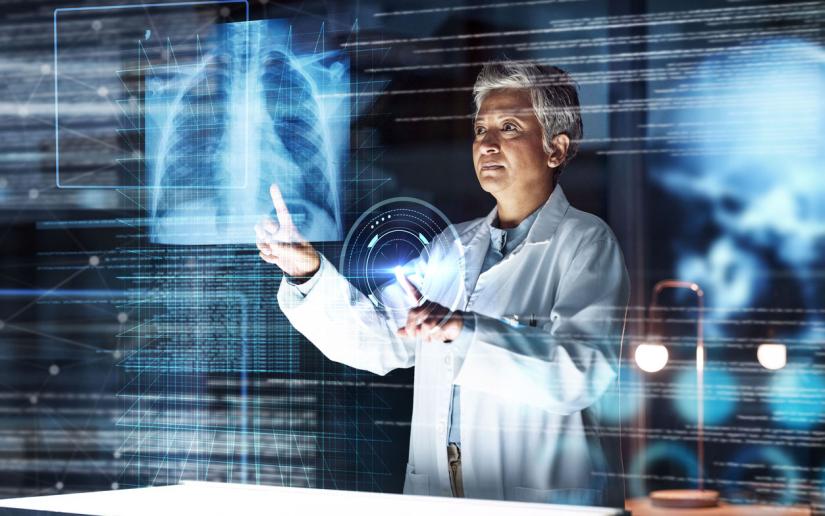A new AI tool accurately detects COVID-19 from chest X-rays.

The new AI system uses a deep learning-based algorithm that is able to quickly and accurately distinguish between COVID-19 cases, normal cases, and pneumonia in X-ray images. Photo credit PeopleImages via iStock.
Researchers have developed a groundbreaking Artificial Intelligence (AI) system that can rapidly detect COVID-19 from chest X-rays with more than 98% accuracy. The study results have just been published in Nature Scientific Reports.
Corresponding author Professor Amir H Gandomi, from the University of Technology Sydney (UTS) Data Science Institute, said there was a pressing need for effective automated tools to detect COVID-19, given the significant impact on public health and the global economy.
“The most widely used COVID-19 test, real time polymerase chain reaction (PCR), can be slow and costly, and produce false-negatives. To confirm a diagnosis, radiologists need to manually examine a CT scans or X-rays, which can be time consuming and prone to error,” said Professor Gandomi.
“The new AI system could be particularly beneficial in countries experiencing high levels of COVID-19 where there is a shortage of radiologists. Chest X-rays are portable, widely available and provide lower exposure to ionizing radiation than CT scans,” he said.
Common symptoms of COVID-19 include fever, cough, difficulty breathing and a sore throat, however it can be difficult to distinguish COVID-19 from Flu and other types of pneumonia.
The new AI system uses a deep learning-based algorithm called a Custom Convolutional Neural Network (Custom-CNN) that is able to quickly and accurately distinguish between COVID-19 cases, normal cases, and pneumonia in X-ray images.
“Deep learning offers an end-to-end solution, eliminating the need to manually search for biomarkers. The Custom-CNN model streamlines the detection process, providing a faster and more accurate diagnosis of COVID-19,” said Professor Gandomi.
“If a PCR test or rapid antigen test shows a negative or inconclusive result, due to low sensitivity, patients may require further examination via radiological imaging to confirm or rule out the virus's presence. In this situation the new AI system could prove beneficial.
“While radiologists play a crucial role in medical diagnosis, AI technology can assist them in making accurate and efficient diagnoses,” said Professor Gandomi.
The performance of the Custom-CNN model was evaluated via a comprehensive comparative analysis, with accuracy as the performance criterion. The results showed that the new model outperforms the other AI diagnostic models.
Fast and accurate diagnosis of COVID-19 can ensure patients get the correct treatment, including COVID-19 antivirals, which work best if taken within five days of the onset of symptoms. It could also help them isolate and protect others from getting infected, reducing pandemic outbreaks.
This breakthrough represents a significant step in combatting the ongoing challenges posed by the pandemic, potentially transforming the landscape of COVID-19 diagnosis and management.
Professor Gandomi is recognised internationally for his contributions to AI applications in fighting COVID-19. He led a team that earned an honourable mention in the esteemed XPRIZE competition focused on COVID-19.

